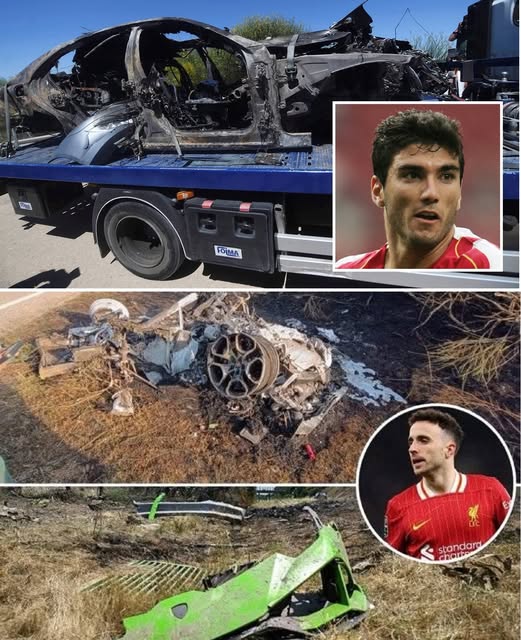What Went Wrong?
Diogo Jota (28) and his brother André Silva (25) were driving a rented Lamborghini on the A‑52 motorway near Cernadilla, Spain, around midnight on July 3, 2025.
-
Authorities say a tyre blowout occurred as they overtook another vehicle at high speed, causing them to lose control, veer off the road, and crash into a ditch before the car caught fire en.wikipedia.org+15thetimes.co.uk+15abc.net.au+15en.wikipedia.org+3en.wikipedia.org+3talksport.com+3.
-
Investigators suspect excessive speed was a contributing factor merca20.com.
José Antonio Reyes was driving with family near Utrera, Spain, on June 1, 2019. Police reported:
-
A similar scenario—speeding combined with tyre failure—led to loss of control, a crash, and immediate fatalities .
Why Does This Keep Happening In Spain?
-
High-Speed Driving Culture
Both cases featured fast, sporty cars driven on Spanish roads—likely motorway conditions encouraging higher speeds. -
Tyre Integrity vs. Speed
At high speeds, a tyre blowout can be catastrophic. Even the best tyres can fail if not properly maintained or under unexpected stress. -
Infrastructure and Enforcement?
Spanish highways can be well maintained, but occasional stretches—particularly in rural areas—require strict enforcement to deter high-speed driving. -
Recurring Tragedy
While tire blowouts happen globally, these high-profile incidents involving elite athletes highlight a grim pattern: luxury, speed, and road risk rarely mix safely.
What Could Help Prevent These Tragedies?
-
Regular tyre and vehicle maintenance, especially before long drives.
-
Strict speed monitoring, with radar and enforcement on known risk routes like A‑52.
-
Awareness campaigns targeting drivers of high-performance vehicles.
-
Emergency run-off zones and enhanced road safety infrastructure.
In Memory of Diogo and Reyes
Each time we look away, another life—like Diogo Jota, André Silva, or José Antonio Reyes—is gone too soon. Their deaths serve as painful reminders that high speed and mechanical failures can be a fatal combination, and vigilance matters—on every road, in every country.

Leave a Reply